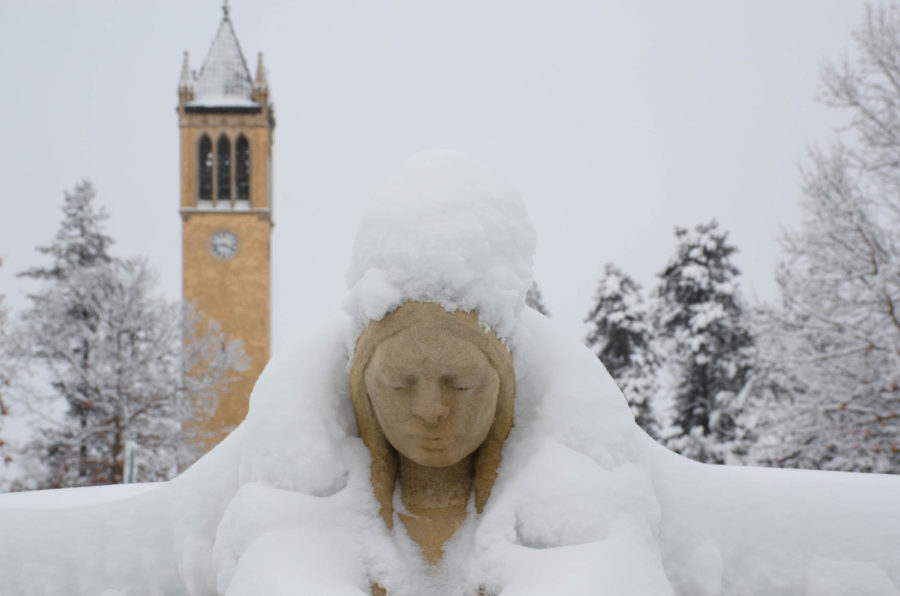Children of the early 2000s can vividly recall the thrill of sitting on their parent’s couch, eyes glued to the television screen, intently watching the list of school closings scroll across the bottom of the news channel like a football player waiting to be selected in the NFL Draft. Seeing your district’s name flash on the screen meant an endless day of building snow forts, sledding with friends and most importantly, no school.
As technology continues to progress and the implementation of remote work has skyrocketed following the pandemic, schools at all levels are moving away from the traditional cancellations and transitioning toward the age of digital learning.
“I think these days are necessary when the weather is dangerous,” Ava Bartolo, a senior studying family and consumer science education and studies said. “While it can be hard to conduct effective learning and maintain student engagement and participation on these days, the technology we have definitely helps.”
Students at Iowa State had a unique start to the spring 2024 semester as it began with the university declaring it would hold all classes remotely on the first day of the semester due to the frigid Iowa temperatures which reached below -10 degrees Fahrenheit this week and wind chills below -30 degrees Fahrenheit.
On Friday, students received an email from President Wendy Wintersteen and staff stating, “Due to the forecast for dangerously cold temperatures next week, Iowa State University will partially close and classes (day and evening) will meet virtually on Tuesday Jan. 16.”
University supervisors were encouraged to provide maximum flexibility for employees to work remotely or take leave on Tuesday. All academic buildings were closed for the day but residence halls and dining centers remained open for students.
“It was kind of a weird way to start the first day of the semester but most of my professors were pretty lenient as the first day usually just involves covering the course’s syllabus,” Kaleb Gauf, a junior in mechanical engineering said.
Around the country, remote learning during instances of extreme weather have become a common theme. According to a survey conducted by Education Week Research Center in November 2020, “39% of principals and district leaders say their district had converted snow days to remote learning days, and another 32% said their districts were considering the change.”
Many question, however, the impact of virtual learning on students’ education. While some argue that remote learning does not provide an equivalent learning experience as opposed to traditional in-person sessions, others believe that virtual classes provide a safe and easy way to remain on pace with a course’s schedule.
“Personally, I learn better in person,” Bartolo said. “I find that it’s easier to stay on task and absorb the information when I’m present in the classroom. However, I know this can be an effective learning style for some people as well.”
While many professors elect to hold synchronous class sessions remotely, others elect to postpone sessions altogether as a result of low student turnouts when held virtually.
“When students don’t have to leave their rooms to attend class, sometimes it results in a higher student engagement,” Bartolo said. “Some students, however, view virtual learning days as unnecessary or optional and choose not to attend.”
In addition to the discourse surrounding the effectiveness of student learning in these different settings, the question of when it is appropriate to use remote learning is another debate of its own. As conditions, temperatures and types of weather vary around the country, there is no standard for when remote learning should be utilized.
“I think there needs to be some sort of system in place to determine when remote learning should be used,” said Joseph Johnson, a senior in marketing.
While the topic of remote learning continues to be a highly debated topic within education, many believe that this is inevitably the future of severe weather days.
“I think whether students are in favor or not, [remote learning days] it seems like the most reasonable solution for schools going forward with all of our access to technology in today’s age,” Gauf said.














